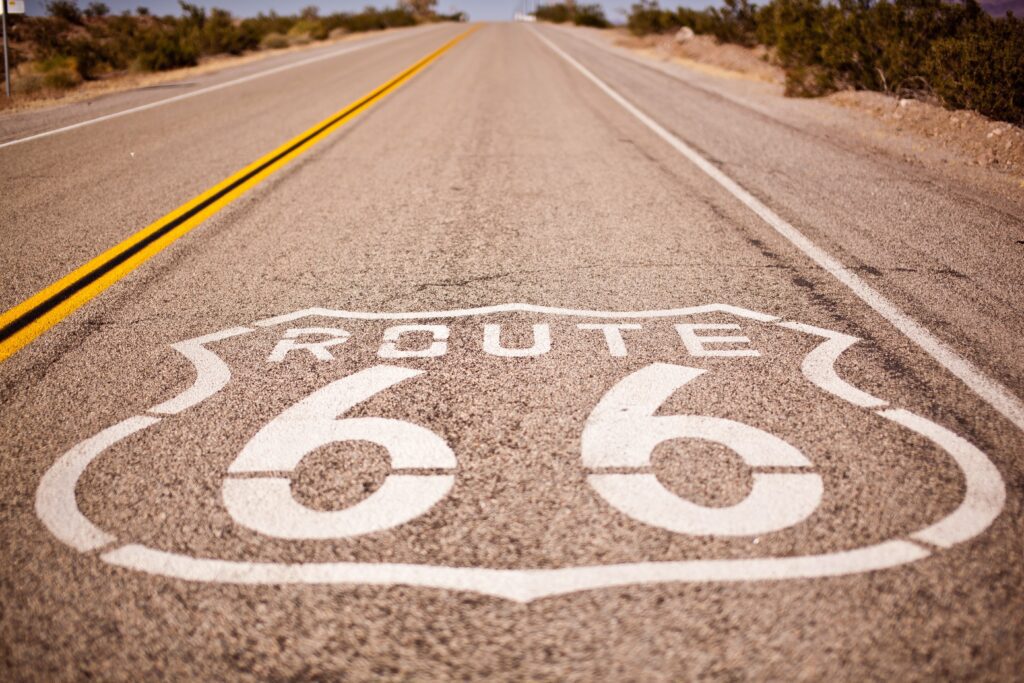Route 66 is one of the most popular highways in the country, if not the most popular. Despite its popularity, there are a number of neat idioms that not a lot of people know about “The Mother Road” or how it got its start.
Route 66 was constructed as an efficient way to travel between Chicago and Los Angeles.
By the end of the 1920s, car ownership grew to 23 million vehicles. This mounting mobility by the American driving public resulted in increased traffic with people wishing to traverse the country. The problem was that there was no easy-to-follow road between Chicago and Los Angeles.
The newly-formed U.S. Route 66 Association described the road as the “shortest, best, and most scenic route from Chicago through St. Louis to Los Angeles.”
The “father” of Route 66 was a Tulsa businessman.
Cyrus Avery came to Indian Territory from Missouri in 1904 to work as an insurance agent. He later expanded into real estate lending and invested in the oil and gas industry. He moved to Tulsa in 1907, and in 1908 bought a farm near Tulsa.
Avery soon realized that a system of interstate highways would help Tulsa and the fledgling state prosper. He was impressed with the Good Roads Movement in Missouri, and subsequently joined the Oklahoma Good Roads Association.
He served as President of the Albert Pike Highway association from 1917 to 1927. He was elected chairman of the Tulsa County Commission from 1913 to 1916 and is reportedly responsible for the construction of the Eleventh Street Bridge, which replaced an old wooden bridge across the Arkansas River.
He began promoting the statewide improvement of roads. He was also instrumental in the formation of the Ozark Trails, a system of roads connecting St. Louis and Amarillo, Texas. After working tirelessly for better roads, he was elected president of the associated Highway Associations of America. He was appointed to the Oklahoma State Highway Commission, where he imposed a gasoline tax to fund the state highway department.
As a commissioner, Avery joined with businessman John Woodruff to promote a single road that would link the Midwest to the West. While he envisioned a highway spanning half the nation, his motives were actually more local. By building a highway through Oklahoma, he surmised that he could siphon traffic and traveler’s money away from cities like Denver, Colorado, and Kansas City, Missouri.
In 1925 The United States Secretary of Agriculture appointed him to the Joint Board of Interstate Highways, which was tasked with designating and marking federal highways. In 1926, the Federal Highway System was approved by Congress, setting in motion the creation of Route 66.
Roosevelt’s New Deal helped complete Route 66
Although Route 66 officially opened in 1926, it was not even close to being finished. The Great Depression which started in 1929 put thousands of young men out of work. As part of the New Deal, many of these men went to work on roads. Thanks to the Civilian Conservation Corps and Works Project Administration, Route 66 was fully paved by 1938.
John Steinbeck coined the term “Mother Road.”
In his iconic Great Depression-era novel “The Grapes of Wrath,” Steinbeck weaves a tale of a poor family who flees Oklahoma for California during the Dust Bowl. The group travels west on Route 66 along with fellow migrants. “66 is the path of people in flight. 66 is the mother road, the road of flight,” Steinbeck wrote.
Route 66 was almost Route 62
The Virginia Beach, Virginia to Springfield Route was designated as U.S. 62 and ended south of Ozark, Missouri. Kentucky was not in the proposed alignment. Kentucky pushed for U.S. 60 to run between Virginia Beach and Los Angeles; the Springfield to Chicago section could be “U.S. 60 North.” Avery countered with “U.S. 60 South” for the Springfield to Virginia Beach route.
Kentucky threatened to leave the new highway system. Eventually, Kentucky offered a compromise: connect their highway system with Avery’s in Springfield and assign the highway the number 60. Avery could have his Chicago to Los Angeles highway if he would accept the number 62, which was originally assigned to their highway. For some reason, Avery detested the number 62 and found out 66 was not being used, and designated the Chicago to Los Angeles highway as U.S. 66.
Black Americans were barred from many Businesses on Route 66
Most white-owned businesses along Route 66 refused to serve black people, and half the counties along the route were white. There were communities called “sundown towns” that erected signs warning Black Americans they had to leave the city limits before dark. The few businesses that served black customers were listed in publications like “The Negro Motorist Green Book,” which informed Black travelers where they could safely stop.
Route 66 is sometimes called the “Will Rogers Highway”
Oklahoma’s favorite son set out on Route 66 to pursue a career in Hollywood, and he often wrote about it in his syndicated columns.
After Rogers’ untimely death in a plane crash, a congressional resolution was introduced to name the highway in his honor, but it never came to fruition.
The U.S. Highway 66 Association unofficially rededicated the highway in his name. There are still markers along Route 66 honoring the famous Oklahoman.











